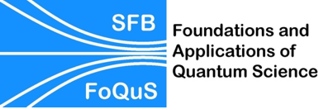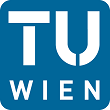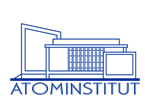 | ||
Projects
| Entanglement in a Cavity CQED systemTracy E. NorthupBased on atom-photon entanglement and state mapping, this work will provide the foundation for experiments with multiple ions in an optical cavity, harnessing the particular strengths of ion-trap implementations for quantum networks. In particular, we plan to demonstrate (i) heralded two-ion entanglement via joint photon detection to provide an initial demonstration of cavity-based quantum-network protocols. (ii) By integrating state mapping with coherent manipulation of single ions, we will implement one-dimensional cluster-state generation, in which the cluster-state nodes consist of photons sequentially exiting the cavity. Extending this protocol to two trapped ions will represent the first realization of a two-dimensional cluster state. In the work above, single ions serve as quantum memories; however, there are advantages to (iii) constructing a single quantum memory across multiple cavity ions by means of an ion-crystal transducer. Investigating how atom-photon state mapping scales with the number of memory ions will allow us to explore open quantum systems, that is, the interplay of coherent and decoherent processes in the ion-cavity interaction. This Jaynes-Cummings interaction can also play a valuable role in quantum simulations. (iv) We plan the simulation of strongly correlated quantum-field theories, based on recent pioneering developments in the theory of continuous matrix products states. Specifically, we plan to simulate the ground-state physics of the Lieb-Liniger model by measuring correlation functions of the cavity output field. In parallel, (v) we will continue to pursue the development of fiber-based ion-cavity technology with the goal of strong ion-cavity coupling. | |






